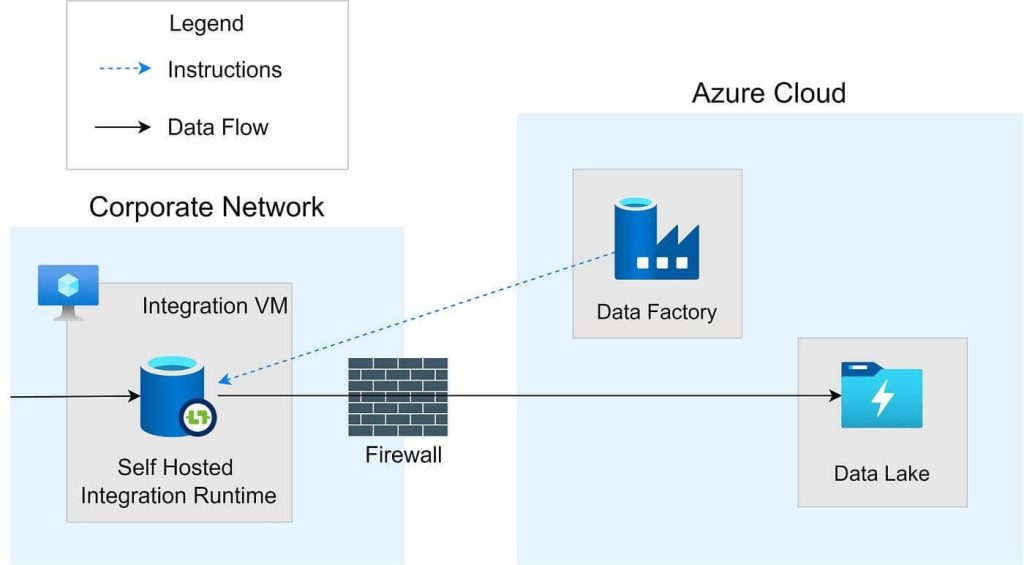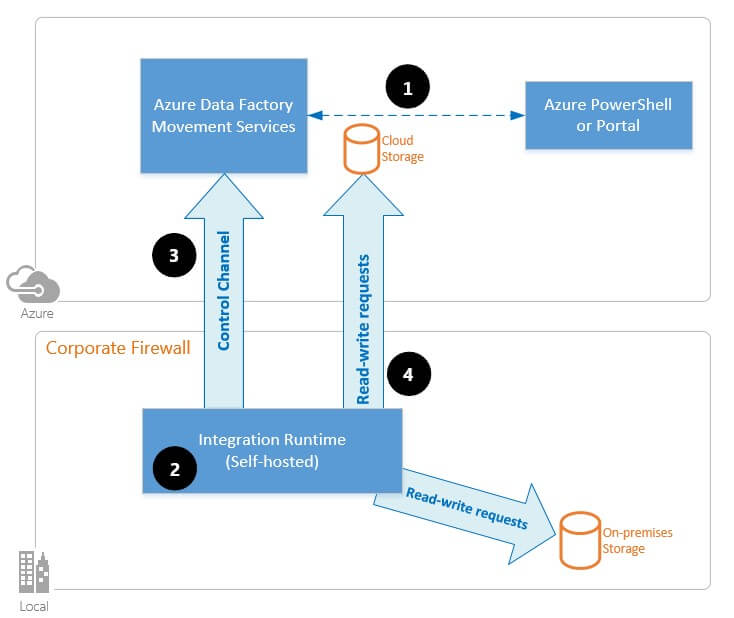To ensure Azure Data Factory Integration Runtime remember it is easy to get completely swamped by data integration. In response to this, I have included a variety of steps that cover distribution of the data process – from initial contact to how-to documentation all laid out with clear footnotes for every paragraph and or example so that you can just hit “Ctrl C Enter” anywhere upon your page. Azure Data Factory services of the best skill and expertise to help you!!
Introduction:
Did you know that according to research by Demand Metric, 80% of business buyers would rather view content like blogs, articles and social media posts from suppliers? That is why we are bringing out this guide. In this section, we will introduce you to Azure Data Factory Integration Runtime and how it can make your data integration tasks a breeze.

Curiosity:
Deepen their understanding of your message Having learned that there are various Integration Runtime options at Azure Data Factory, it follows to inquire a bit more deeply. This section makes clear and contrasts the benefits of different types of integration runtimes offered by Microsoft: Managed Dedicated Integration Runtime in particular, and also Self-Hosted Integration Runtime these days. So wherever your needs lie (i.e., where they’re mainly contingent upon what Intel releases next), please pick just the most suitable choice amongst these two methods!”
Decision:
Emphasizing its good points Using Azure Data Factory Integration Runtime could prove to be beneficial. After a bout with the thing, we’ll show how it can cut your time and resources, improve IT Management efficiency tremendously and thus in itself keep profits on an upward spiral!Hire Azure Data Factory Developers of the best skill and expertise to help you!!
Action: Guide Them Through Integration

By following these steps, you’ll be on your way to integrating data within Azure Data Factory simply and efficiently. So, what do you say? Let’s get started to learn how to create integration runtime in azure data factory.
Now that you have understood the basics of creating your Azure Data Factory Integration Runtime process, let’s move on and explore deeper intellectual matters. This section will provide a series of advanced techniques and best practices to help you build your data integration workflows.
Advanced Integration Runtime Concepts:
Managed Virtual Network (MVN): With a Managed Virtual Network for your Integration Runtime, raise data security to a new level. This isolates movement and processing of data within its own Azure virtual network. That means more control, not just about what data gets in or out but also how much bandwidth goes where-as well as increased compliance.
Custom Integration Runtime (CIR): For finer grained control over your computing environment, consider one of these. A Custom Integration Runtime means that you can install and configure individual software packages on the machines used by your Integration Runtime so as to better cater in unique processing cases.
Data Factory Monitoring: Add Azure Monitor for your Data Factory. This will enable you to gain insight into the performance and well-being of Integration Runtime, proactively spot potential issues. As a result, there are better, smoother data processing operations.
Automating Your Data Flow: Two Powerful Methods for Azure Data Factory Pipelines
Introduces two popular methods: data flow in ADF with triggers and scheduler focusing on their advantages will help guide Azure Data Factory pipelines.
Best Practices for Effective Integration:
Leverage Data Flows: When it comes to transforming data, use the built-in Data Flows technology in Azure Data Factory. This gives a what-you-see-is-what-you-get way of creating data pipelines with transformations like filtering, aggregations and joins – which means no complex coding or extra interfaces for your Integration Runtime ad nauseam.
Optimize for Performance: When copying large datasets, consider data compression within your Integration Runtime. Such modification can greatly reduce network bandwidth usage and the time consumed in transferring data across networks.
Use Automation: Combine Azure Automation into your Integration Runtime and the mechanisms for data integration will be more efficient all around. Automation at this level allows you to schedule automated workflows that kick off data pipelines based on certain events or at particular times. This reduces hands-on processing and ensures continuity of data flow.
Embrace Version Control: Create a version control system for the pipelines of your Data Factory and the configurations of your Integration Runtime. By doing this you can track changes, delete unwanted ones and work with other engineers on data
Security Considerations:
When dealing with sensitive information, data security is an issue that must be considered paramount. Let’s look at some key considerations for your Integration Runtime:
Managed Identities: In your Integration Runtime, use Azure Active Directory (AAD) Managed Identities to access data stores securely without needing to store access keys in your pipelines. By doing this, we increase security and reduce the possibility of credential leaks.
Data Encryption: When doing data movement operations within your Integration Runtime, always make sure that data encryption is used for data at rest and in transit. In this way the confidentiality of data is protected from unauthorized people snooping on it.
By understanding these advanced concepts and making use of best practices, your Azure Data Factory Integration Runtime will be able to achieve its full potential. Just remember, a well-configured Integration Runtime not only improves efficiency in data integration and security, it also helps your organization make decisions based on data.
While we’ve covered the core features and How-Toss, your journey with Azure Data Factory isn’t over yet. You must also face case studies in which issues may not be solved immediately and more advanced examples until! Hire Azure Data Factory Developers of the best skill and expertise to help you!!
Common Issues of Troubleshooting:
Errors in Connectivity: When you find yourself unable to connect between your data stores and Integration Runtime, firewalls are the place to look first. Check whether Azure’s and your own on-premises firewall configurations must allow necessary inbound and outbound traffic for your Integration Runtime. Make sure network security groups (NSGs) are all set correctly.
Data Transformation Errors: If you have data transformation problems or concerns, turn to Data Factory monitoring for assistance. Use data previews within the activity to recognize data that will lead to problems or transformation logic errors.
Integration Runtime Performance Issues: If your data processing times are a little slower than usual- Think about looking at the bottlenecks in the Data Factory monitoring information you have collected. Increase the number of worker nodes for parallel processing in order to scale up your Integration Runtime, or else work on reducing complexity in your data pipelines that might be causing slow performance.
Optimizing Your Azure Data Factory Integration Runtime for Efficiency
Regarding how to create integration runtime in azure data factory-While the last sections covered advanced use cases, a key part of improving the efficiency of your Integration Runtime is in fact optimizing the data pipelines themselves. Here’s how to start:
Reduce Processing Complexity:
Simplify transformations: Break down complex transformations into smaller, more manageable steps. This can significantly improve processing efficiency.
Leverage native capabilities: Use built-in Data Factory features like data filtering, aggregation or joining in Data Flows instead of custom code whenever it is feasible to do so.
Optimize data types: Ensure that the data types within your pipelines are aligned with their intended purpose. Superfluous data type conversions can create processing overhead.
Table 1: Optimization Techniques
| Technique | Benefit |
| Simplify transformations | Faster processing times |
| Utilize native capabilities | Reduced code complexity |
| Optimize data types | Improved processing efficiency |
How to Raise Your Efficiency to a New Level: Advanced Case Studies
Further related to how to create integration runtime in azure data factory-Beyond optimization, here are some advanced use cases that fully unleash your Integration Runtime’s capabilities:
Hybrid Data Integration: Tap into the Self-Hosted Integration Runtime to keep on-premises data stores and cloud-based sources in the same Data Factory pipelines. This provides a data environment that’s consistent all around for deep analysis.
Incremental Data loads: If you have data that is frequently updated, load it incrementally to only take the new or revised data. This lowers processing time and saves network bandwidth.
Parameterization and Reuse: Parameters are used to define the dynamic states of your pipelines. This means that you can simply and easily tailor the parameters when running and reuse code management is promoted. Your pipelines will also become more concise.
Trigger-Based Workflows: Configure your pipeline with triggers and automate data processing. Use Azure Blob Storage or Event Grid triggers to start when certain events occur, and thus ensure real-time data processing.
Table 2: Advanced Use Cases for Efficiency
| Use Case | Benefit |
| Hybrid Data Integration | Unified data environment |
| Incremental Data Loads | Reduced processing time and bandwidth usage |
| Parameterization and Reuse | Efficient pipeline management |
When you harness the power of the Optimization Engine underpinning these cutting-edge application scenarios, not only is your Azure Data Factory Integration Runtime faster but more customizable than ever too. And don’t forget, continuous exploration and experimentation are key to unlocking the full potential of this platform Hire Azure Data Factory Developers of the best skill and expertise to help you!!
Azure Data Factory Integration Runtime: 10 FAQs Answered
What is Azure Data Factory Integration Runtime?
Data Factory Integration Runtime is the engine that runs your data movement and transformation activities in Azure Data Factory. It provides the connections and enables deeper processing power to flawlessly bring out data from various sources.
What are the types of Integration Runtime available for use?
There are two primary varieties: Managed Dedicated Integration Runtime A completely managed option with built-in computing and compute resources for your data pipelines. Self-Hosted Integration Runtime Gives more control. You Are given free rein to do specific software installs on the virtual machines which form the processing environment for your data processing.
Which Integration Runtime is right for me?
For most situations, a Managed Dedicated Integration Runtime suits finely for its simplicity. However, should you require finely-grained control over the processing environment or demand specific software installs, then a Self-Hosted Integration Runtime may be more appropriate.
How secure is the Integration Runtime?
We take security seriously. With features such as Managed Identity and Data Encryption, you can ensure only trusted entities have permission to access data stores and protect sensitive information as it moves across your applications.
What are some advantages of using an Integration Runtime?
There are a good number of benefits to be had with an Integration Runtime, such as: Straightforward integration of data from many sources improved data processing efficiency more complete data protection through access restrictions and encryption of data
How can I monitor the performance of my Integration Runtime?
Microsoft Azure Monitor is a helpful service for understanding how your Integration Runtime is performing. There you can see such things as execution times, errors, and the utilization of resources – data that allows you to identify bottlenecks in your data pipelines and then apply optimization accordingly.
What are Data Flows?
Dataflows is built right into Azure Data Factory so you can quickly create data pipelines with visual transformations including filtering and aggregation. This will lighten the overall data processing load on your Integration Runtime.
How can I utilize Automation to process data in my Integration Runtime?
Use Azure Automation to trigger your Data Factory pipelines based on specific events or timetables. This gives you automated data processing and reduces manual work.
Can integrate with on-premises data stores?
Yes! If you use a Self-Hosted Integration Runtime, then your on-premises data stores can be securely connected to and integrated with cloud-based data sources in Azure Data Factory pipelines.
What does the future hold in store for Integration Runtime?
There’s plenty of excitement ahead, with new serverless options, deeper monitoring that’s AI-enabled and support for connecting to Azure Cognitive Services instances to enrich your data.
Read More:
This post examines the strengths of Azure Data Factory (ADF) in addition compares it to other main players on the market. You’ll be better guided.



